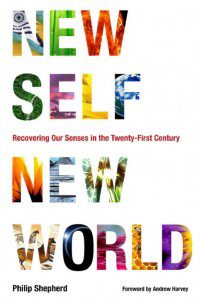Guest Writer for Wake Up World
A well-known neurological phenomenon is expressed in a catchy maxim: “What fires together wires together.” This phrase tells us that if two distinct neural pathways habitually fire together, they eventually lose their distinctiveness. The brain starts to treat them as one, because it’s more economical. As an illustration of this, researchers taped two fingers of a hapless monkey together for a period of time; and when the tape was finally removed, the two fingers straightened together and bent together. Their neural pathways had been forced to ‘fire’ together, so they had ‘wired’ together.
There are many ways in which our neural pathways practice such economy in our daily lives, but the effect often remains hidden to us because the ‘wiring’ so often belongs to the culture that shapes us.
[pro_ad_display_adzone id=”110028″]
My childhood was shaped by the stifling conformity of the ’fifties – the tone of which was set by a generation of fathers who had been in the army as teenagers. They were prepared to die for a cause, and were themselves shaped by a paternalistic, top-down organization in which efficiency relied on conformity, feelings were to be reigned in, and sensuality was a liability.
I was also shaped by the ’sixties, an era distinguished as the first time in human history in which a generation of young people turned to their parents and said, “What you are doing is wrong.” Reacting against their parents’ world, the younger generation empowered a cultural revolution on several fronts – a revolution in social justice, in self-expression, in a renewed identification with wild nature, against the militaristic imperative, against racism and sexism, and of course for sex. The sexual revolution assaulted the prevailing views that sex was sinful unless sanctified by the church; that genitals are inescapably shameful; and that deep physical pleasure carries the taint of deep guilt.
Whoever believes that the sexual revolution freed a generation from those burdens underestimates their tenacity. But it did bring bodily pleasure front and center, and brought the body itself into plain view as both an object and source of pleasure. Because this was coupled with the self-fulfillment espoused by the ‘me’ generation, the effect was mixed. For instance, the resulting freedoms have been a huge boon to advertisers, who are relentless in searching for ways to overtly associate their products with sexual pleasure. The potent effect of such advertising is brought to light by the maxim quoted above: if every time you see a certain product advertised, you also experience the pleasure of a mild arousal, the product and the pleasure are firing together and begin wiring together. You are then more likely to buy the product because it ‘feels better’ than the others. Reason tells us that choosing on such a basis is ludicrous – but as advertisers know all too well, we are not governed by reason.
In some ways our progress towards sexual liberation has created a greater potential in us as individuals for experiencing our wholeness. It has taken the edge off many of the divisive condemnations and shamings that have been with us for generations. But it has also brought with it forms of division all its own. These newer divisions show up in the social pressure to be sexually active, as though it were a failing not to be; in the hook-up culture; in the ability of marketing campaigns that use soft porn to tacitly (and ridiculously) promise us more sex if we buy their stuff; in the massive sales of Viagra, and the hopes pinned on the newly approved version for women; and in the common view that having sex is primarily a means to self-gratification.
I sometimes think that in carrying our sexuality out of the darkness, we managed to bring the body, but forgot to bring the heart. Without the engagement of the heart, we tend to objectify what we see and experience. The objectification of the body, and especially of the female body, has been noted and discussed at length. What remains underappreciated, I believe, is its effect on the person doing the objectifying.
To be sure, the naked female form is ‘a thing of beauty’, and our evolution has amply prepared us to appreciate it. But to stop there, to see it as a mere object that triggers desire, is to remain in a divided state within yourself. The stirrings of your desire will be disconnected from your heart. In our culture this is a normalized state, and we are surrounded by invitations to it; but when the objectification and the desire fire together over and over in the course of a day, and do so every day, desire learns to lean on and seek objectification. Eventually sexual arousal is associated with objectification. They wire together. And when that happens, sexual arousal ends up in one category, and the heart’s love (which never objectifies) ends up in another: they live within us as separate energies.
Because this division has been normalized in our culture, the fallout from it can be seen all around us. There are men and women who dearly love their partners, but are frustrated in the bedroom because they don’t know how to let their love flood their genitals. There are sex addicts who can never find deep satisfaction, because what they really long for is the intimacy of expressing love. There are men and women who tire of being in bed with the same body year after year, and sometimes switch for a new one to feed their arousal – because unlike love, objectified arousal cannot deepen over the years. In fact, objectified arousal needs to find more and more extreme forms of objectification to maintain its charge.
This cultural tide is hard to swim against. But as a man, I know that if I look at a beautiful woman from a place of wholeness within myself, I see her wholeness; and seeing a woman in her unique wholeness – having a sense of her courage, hopes, uncertainties, sensitivity and grace of being – always enhances my appreciation of her beauty. At the same time, it disarms my experience of the pull of any neediness.
I really believe that the deepest human longing is to grow into our wholeness as individuals, and to learn to experience it and trust it; yet we live in a culture whose corporate and political interests have learned to prey on our divisions and deepen them. When we are divided, we are confused and malleable. But we do have choice. We can learn to soften our inner divisions and grow into wholeness. When you grow into wholeness, you grow into love. And as you grow into love, you begin to attune to a coherence that imparts a clarity to everything. As we gain that clarity, we come to understand that it is more than just a personal clarity. The coherence it arises from isn’t circumscribed, but borderless – generated and upheld by the ineffable harmony of the world in which we live.
Moving towards that kind of clarity begins with a simple but crucial first step: recognizing when you are in a divided state, and understanding that when it comes to your wholeness, you do have a choice.
Previous articles by Philip Shepherd:
- The One Thing We Completely Understand
- The Lotus Eaters: Finding Remembrance and Coherence in a World of Addiction and Distraction
About the author:
 Philip Shepherd is recognized as an international authority on embodiment. His unique techniques have been developed to transform our experience of self and world and are based on the vision articulated in his celebrated book, New Self, New World. Philip understands that most of our problems, individually and globally, stem from a single root cause: we have created a culture of disconnection. The approach he takes heals the frantic, restless pace of the intelligence in the head, which tends to run on overdrive, by uniting it with the deep, present and calm intelligence of the body.
Philip Shepherd is recognized as an international authority on embodiment. His unique techniques have been developed to transform our experience of self and world and are based on the vision articulated in his celebrated book, New Self, New World. Philip understands that most of our problems, individually and globally, stem from a single root cause: we have created a culture of disconnection. The approach he takes heals the frantic, restless pace of the intelligence in the head, which tends to run on overdrive, by uniting it with the deep, present and calm intelligence of the body.
You can follow Philip’s work and contact him via his website www.philipshepherd.com and www.facebook.com/philip.shepherd.16.
New Self, New World: Recovering Our Senses in the Twenty First Century
If we were to consider the towering crises faced by the 21st century and trace them to their roots, we would find that each of them leads back to the same cultural force: the one that tells us who we are. Culturally speaking, ‘living in the head’ is the elephant in the room: it dominates all we do, and no one seems willing to start a conversation about it. New Self, New World initiates that conversation.
Written by author Philip Shepherd, New Self, New World traverses disciplines and boundaries with ease and precision, gathering wisdom as it goes. It is a philosophical masterwork, a spiritual handbook, a sweeping historical renewal of the human story, and an alignment of the profoundest mystical teachings of the world. Between its two covers awaits a lifetime of adventure.
New Self, New World is available here on Amazon, or visit PhilipShepherd.com for more information.
[pro_ad_display_adzone id=”110027″]








